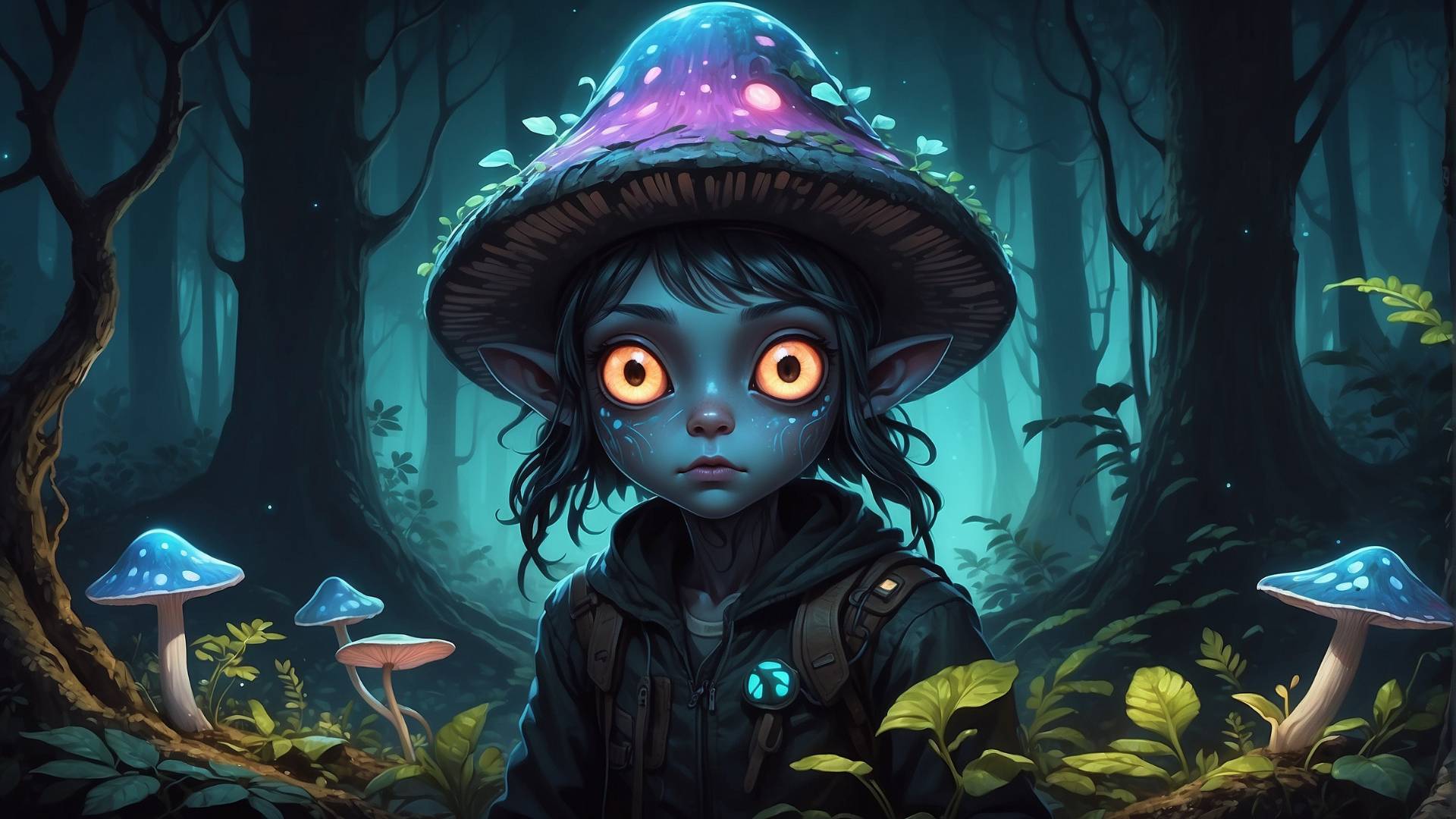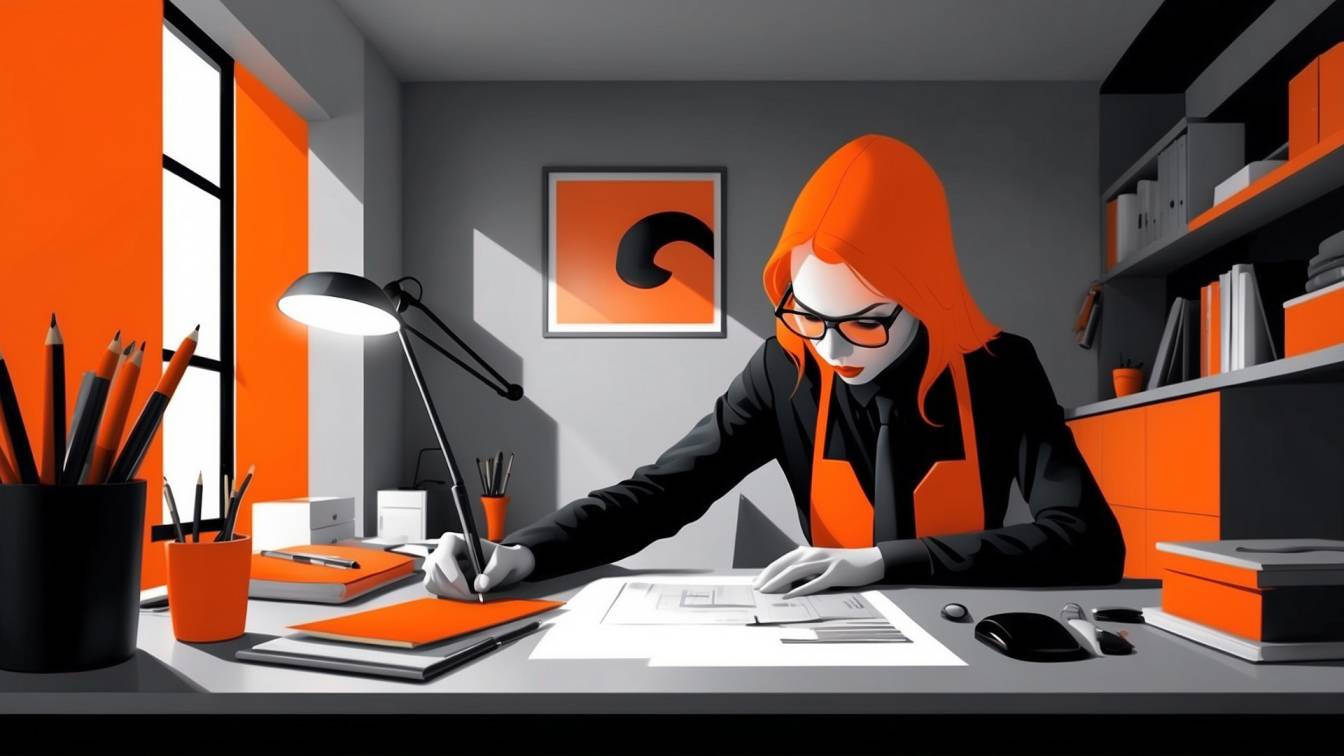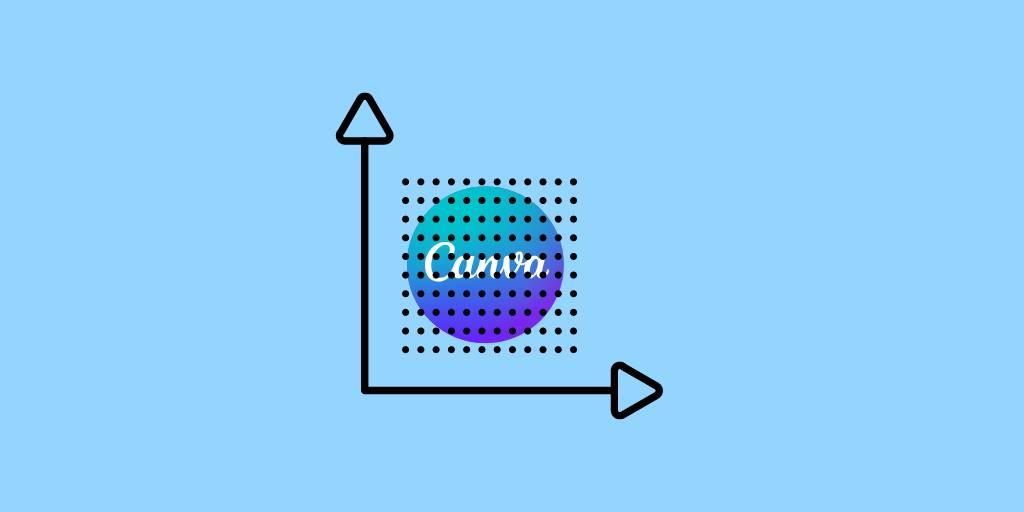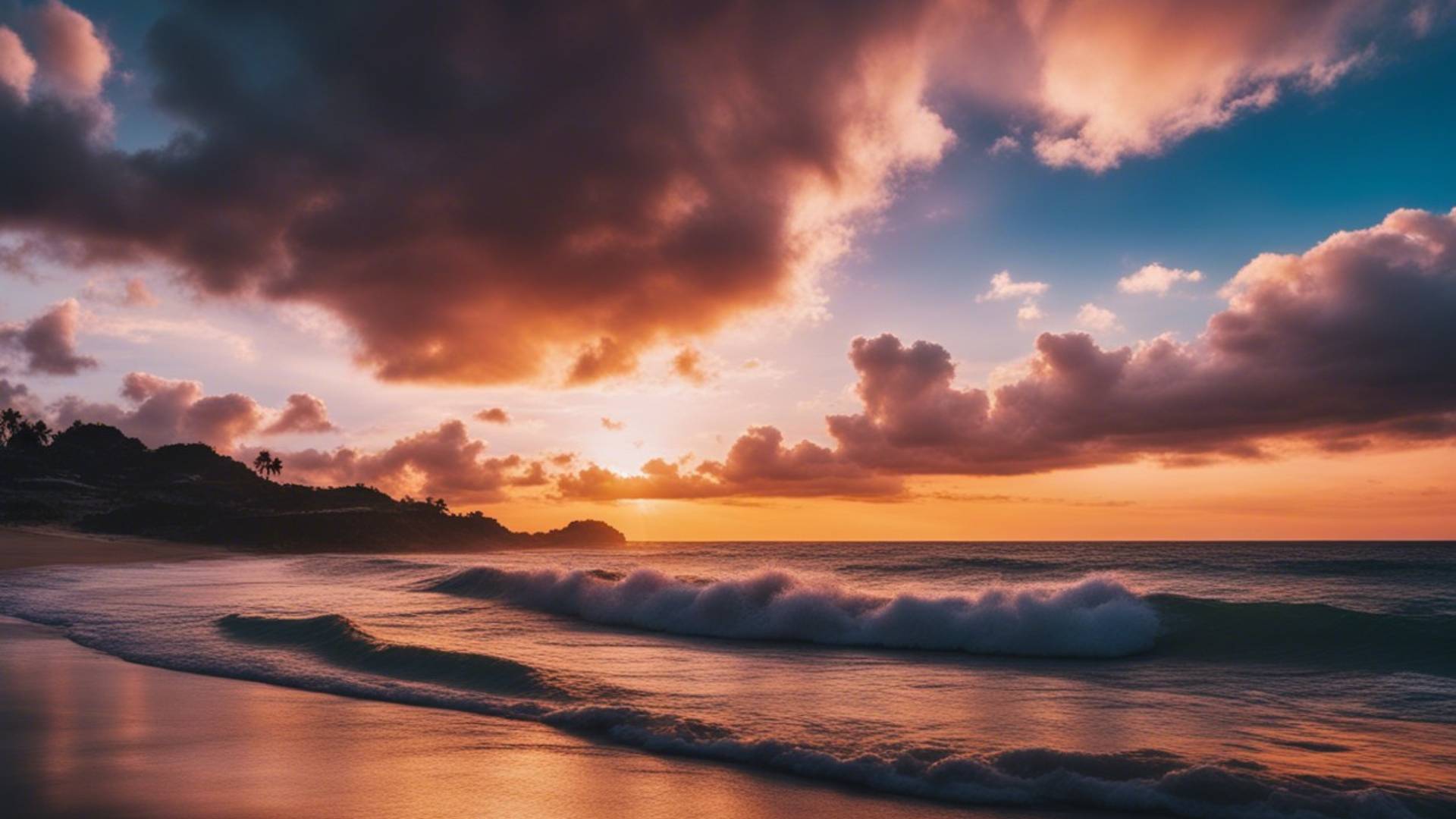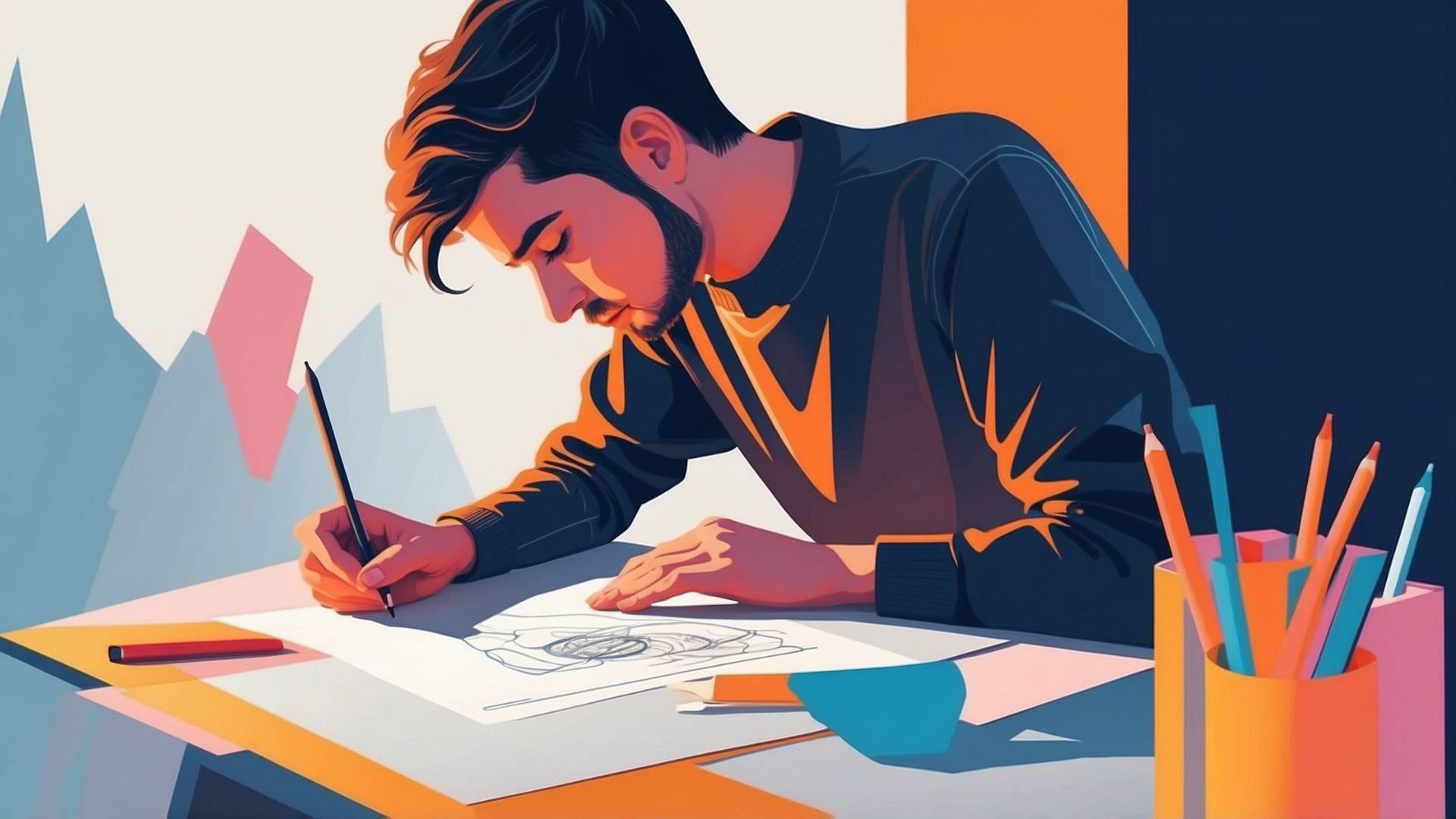You just printed out your perfect photo and wow – it looks awful!
The image is blurry and pixelated, nothing like how sharp it appeared on your computer screen.
What went wrong?
This common issue is caused by something called low “DPI.”
DPI stands for “dots per inch” and refers to the number of dots or pixels squeezed into every inch of an image. Pictures that look fine on screens at 72 DPI often need about 300 DPI to print well.
Luckily, there’s a quick, free trick to rescue your prints without buying Photoshop.
While the video above is detailed, you can also keep reading to learn how to easily increase the DPI of images before you print them out.
I’ll explain step-by-step so you can quickly fix blurry picture prints for good.
Why Low DPI Makes Prints Look Bad
To understand the blurry print problem, imagine stretching a small photo across a large poster. When expanded too far, the pixels get gappy and distorted. The photo data wasn’t dense enough for that size.
Printers run into the same issue trying to fill an inch of paper with only 72 pixels. Photos from the web or devices are often 72 DPI – fine for screens but too pixelated when printed.
By increasing an image to 300 DPI before printing, you pack 4 times more pixels into every inch. This extra density makes prints sharp and beautiful.
The Easy Fix: Use Photopea to Change DPI
Don’t waste money on Photoshop just to increase print quality! Instead, use the free online tool Photopea.
Photopea works right in your web browser. It lets you tweak resolution along with other handy edits. The best part – no downloads, accounts, or charges are required.
Change DPI of Image Without Photoshop
Follow these simple steps to effortlessly convert images to print-ready 300 DPI:
STEP 1: Go to Photopea.com in any web browser.
STEP 2: Drag in the photo you want to adjust.
STEP 3: Click Image then select Image Size.
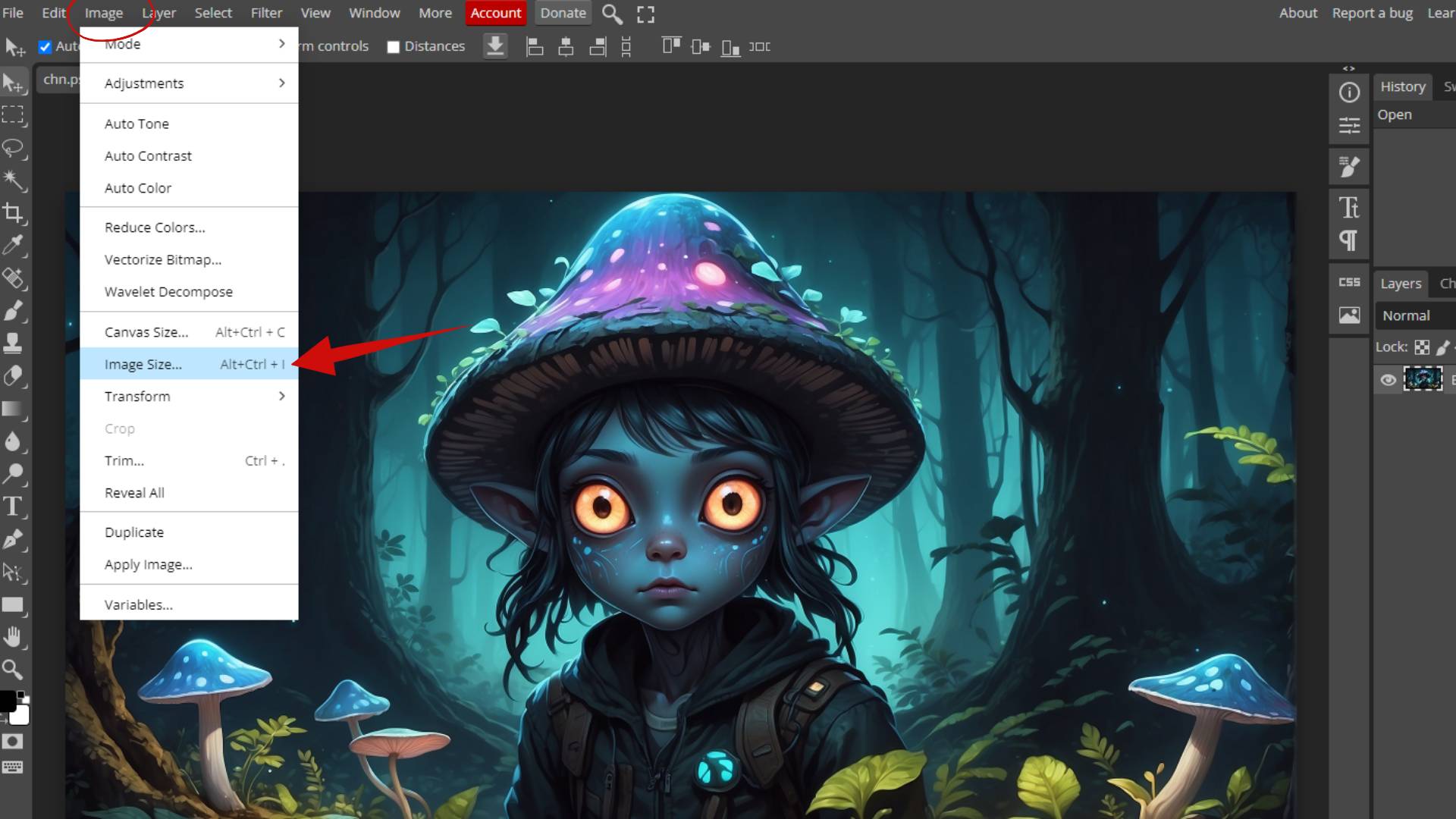
STEP 4: Enter 300 for DPI Resolution.
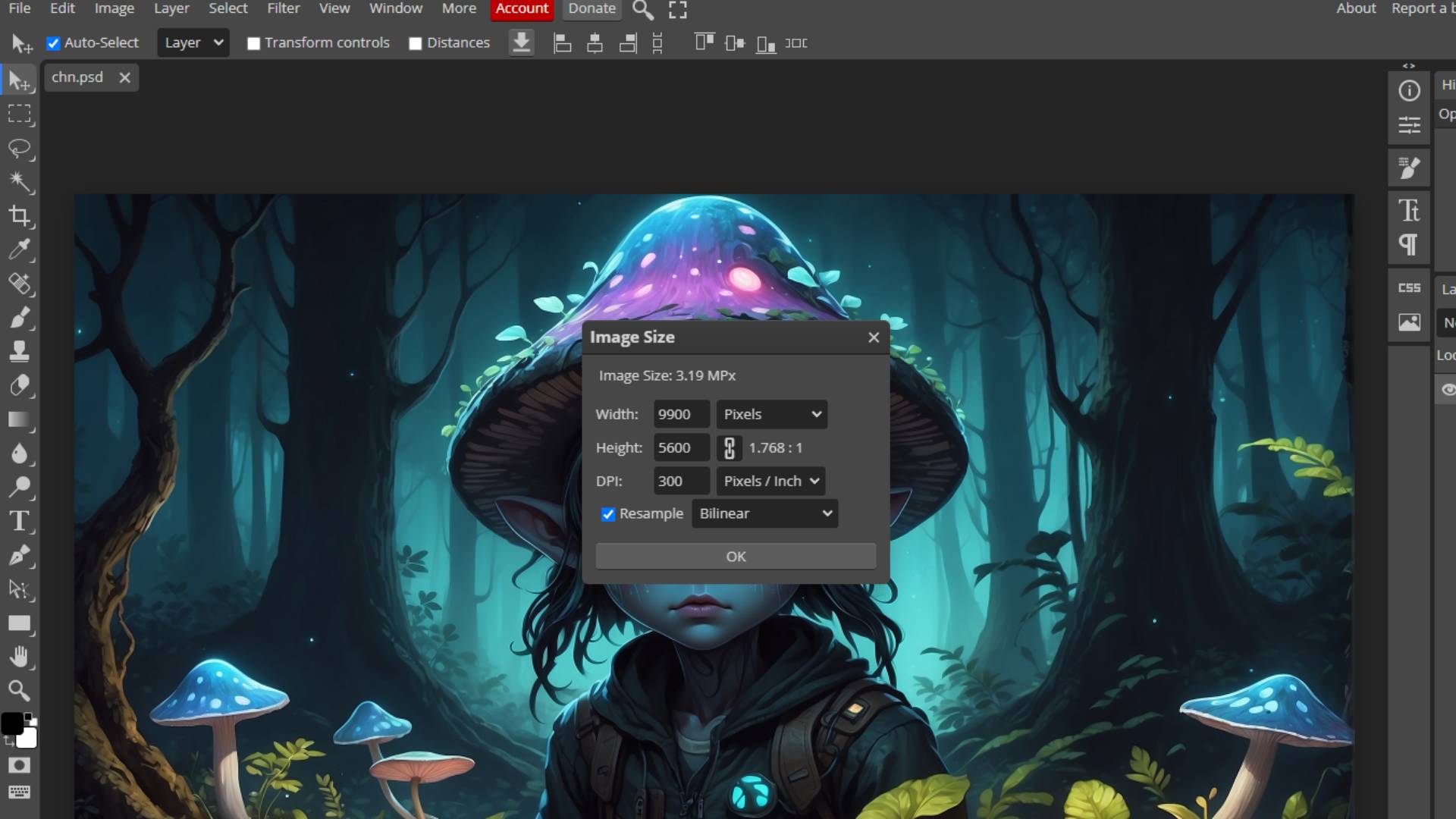
STEP 5: Click OK to finish.
It takes less than a minute! Photopea automatically changes the DPI without altering photo dimensions. Plus, you can batch-edit multiple images at the same time.
However, the issue with this process is that it automatically resizes the image. Yes, it changes the DPI, but you end up with a larger image.
If you want to change the DPI of your image without altering its size, there is one step you should follow.
Change the DPI of an Image Without Photoshop And Resizing
STEP 1: Go to Photopea in any web browser.
STEP 2: Drag in the photo you want to adjust.
STEP 3: Click Image then select Image Size.
STEP 4: Uncheck the Resample box.

STEP 5: Enter 300 for DPI Resolution.
STEP 6: Click OK to finish.
In STEP 4, unchecking the resample box allows you to change the DPI of the image without resizing it. It’s so easy!
Now when you print, ink fills hundreds more dots per inch for stunning quality. No more ugly, blurry pixelation ruining your hard work.
Extra Tips to Maximize Print Results
Along with adjusting DPI, a few other quick tweaks can really make your printed photos shine:
Crop to standard photo ratios like 5×7 or 8×10 to avoid warping or cropping by the printer.
Convert to CMYK color mode which uses ink cartridge colors instead of on-screen RGB colors.
Add a slightly sharpened filter to offset softening from print publication.
Save final files as high-quality JPEGs to keep printable file sizes reasonable.
Following this complete workflow guarantees eye-popping prints ready to frame and proudly display!
Avoid Resizing When Changing Resolution
One key point about boosting image resolution is to do it without resizing if possible.
Here’s why:
When you resample or resize a photo, the software inserts new estimated pixels instead of actual image data. This risks a slight quality loss through interpolation.
By just inputting a new DPI, you stick to the original pixels captured in your picture. No risky guessing or filling in data is needed! This yields the crispest, truest prints from your images.
The Photopea method outlined above keeps dimensions intact for this reason. But if you MUST resize an image, try to only scale up by 10-20% for minimal interpolation.
Conclusion
Bad-quality prints can ruin all your hard photography work.
But armed with the easy DPI-boosting tricks above, you can now rescue disappointing prints for high-quality results every time – without costly software.
So free your photos from pixelated printer prison! Head to Photopea now to bump image resolution before you print your next masterpiece.
However, if you want to learn how to change the DPI of an image in Photoshop or in Canva, then you should our other tutorials:
BONUS FOR YOU: Get the Digital Product Starter Kit and start building your own online business today.
Here Are Some of My Favorite Tools For Print-on-demand
As a graphic designer and POD seller, I’ve had the opportunity to discover different helpful products and tools that can be time-saving and make the process of creating your designs a bit smoother.
DESIGNS: Kittl (best for t-shirt designs), Vexels (for professional designs), Placeit (for unique product mockups)
GRAPHICS: Creative Fabrica (cheapest marketplace), Envato Elements (more variety)
SELLING DESIGNS: Creative Fabrica (for advanced graphic designers)
ETSY:
- Research – Alura (best), ProfitTree ( beginners)
- Fulfillment – Printul (beginners), or Printify (advanced).
Disclosure: Some of the links above may contain affiliate partnerships, meaning, at no additional cost to you, NechEmpire may earn a commission if you click through to make a purchase.
- How To Remove Background In Canva Mobile App - September 4, 2025
- How to Detach Image From Background on Canva Mobile - September 4, 2025
- How to Add Ruler And Guides in Canva Mobile App - September 3, 2025

